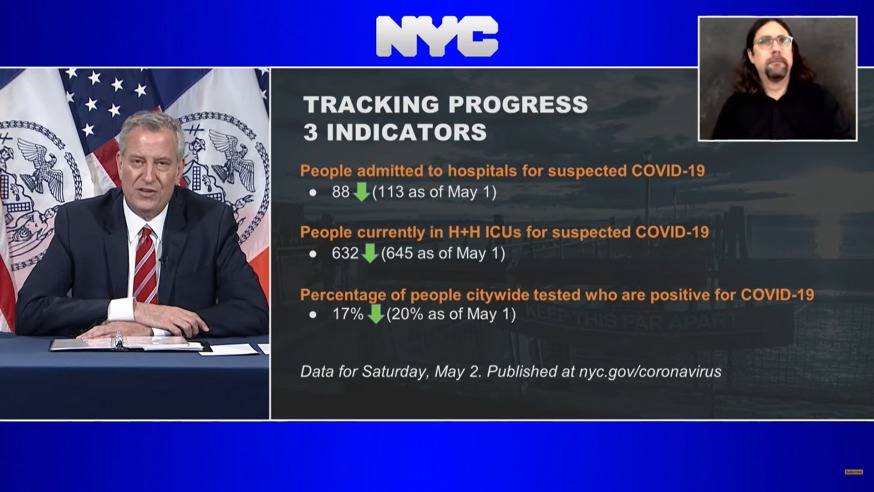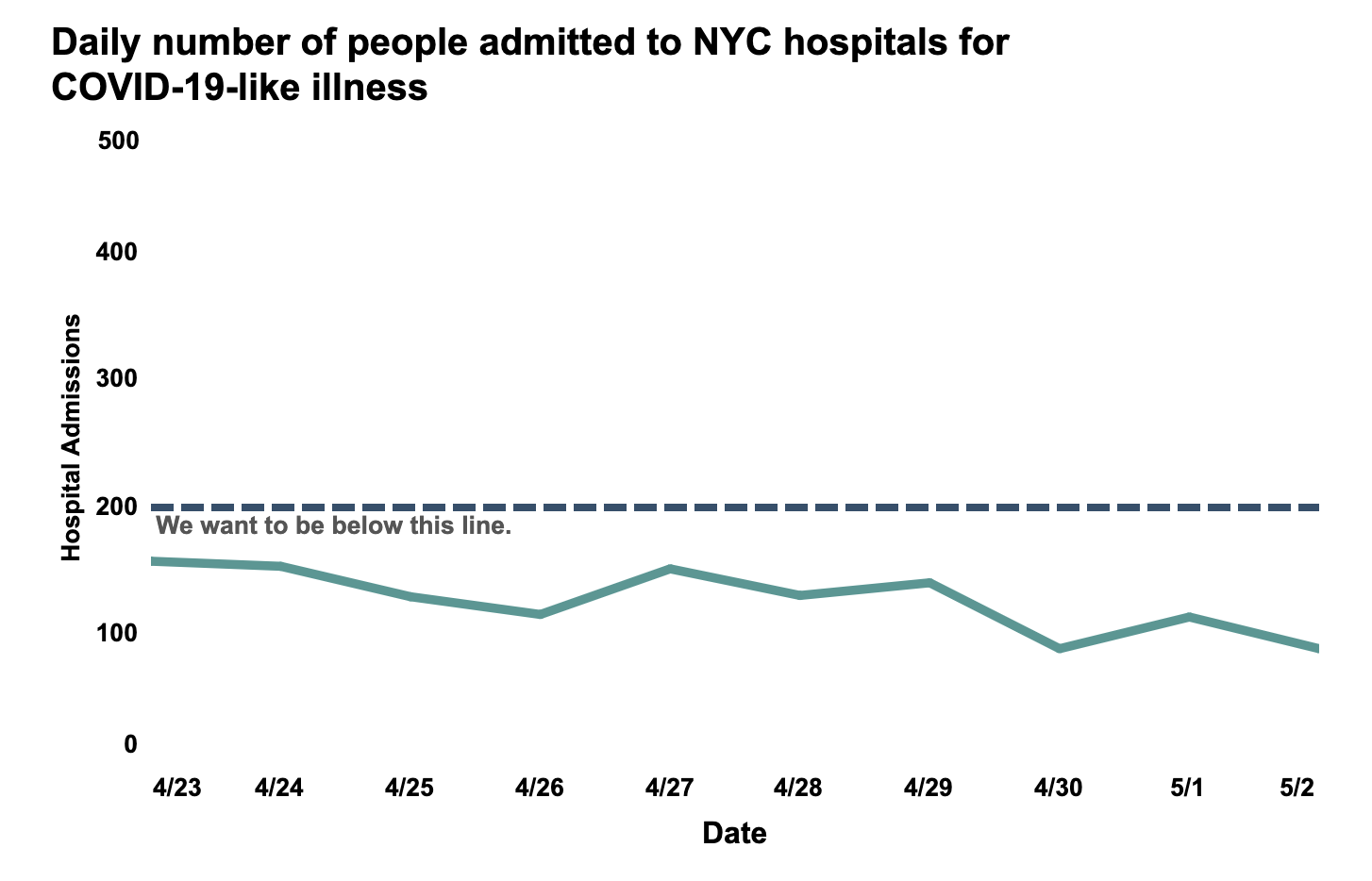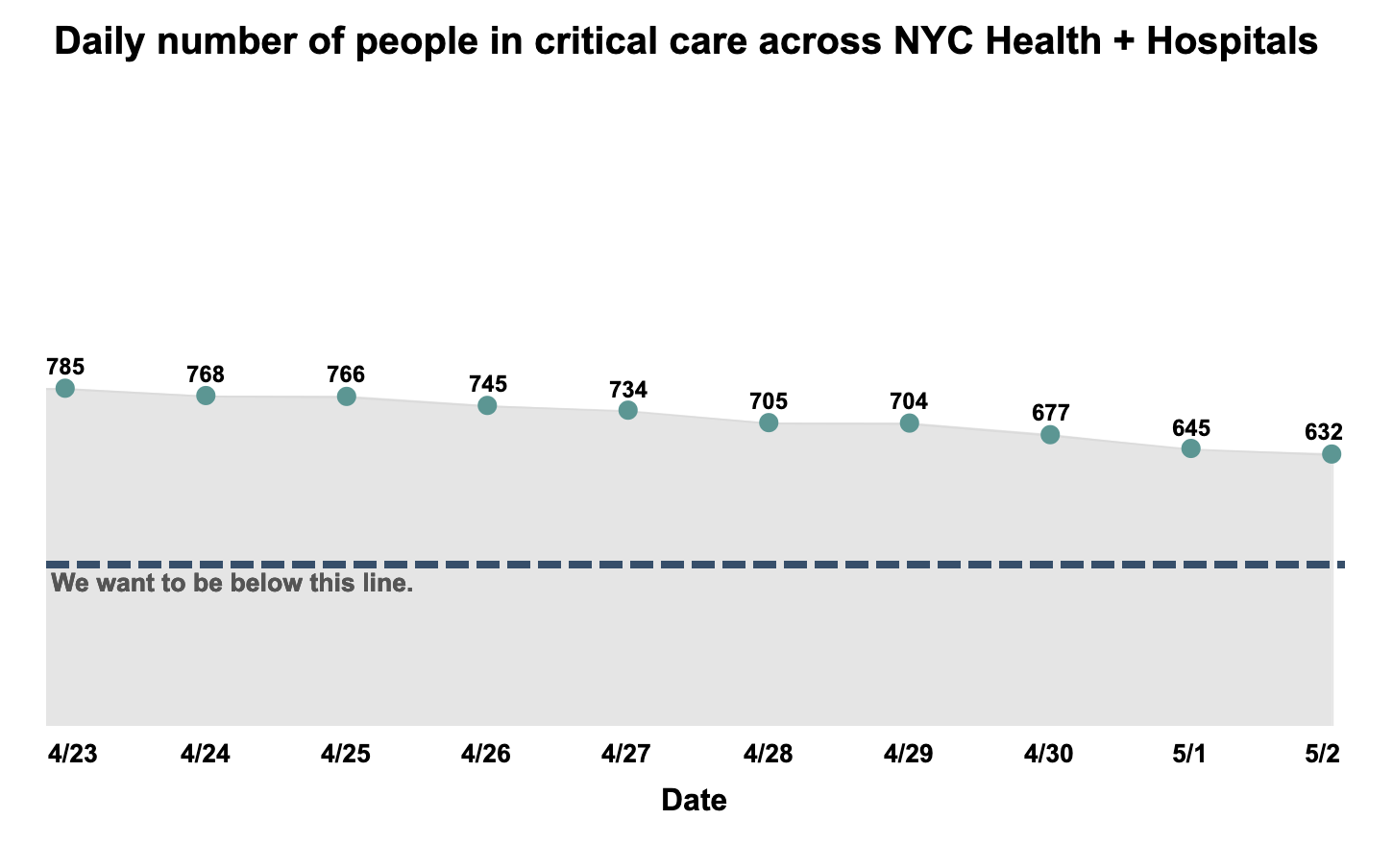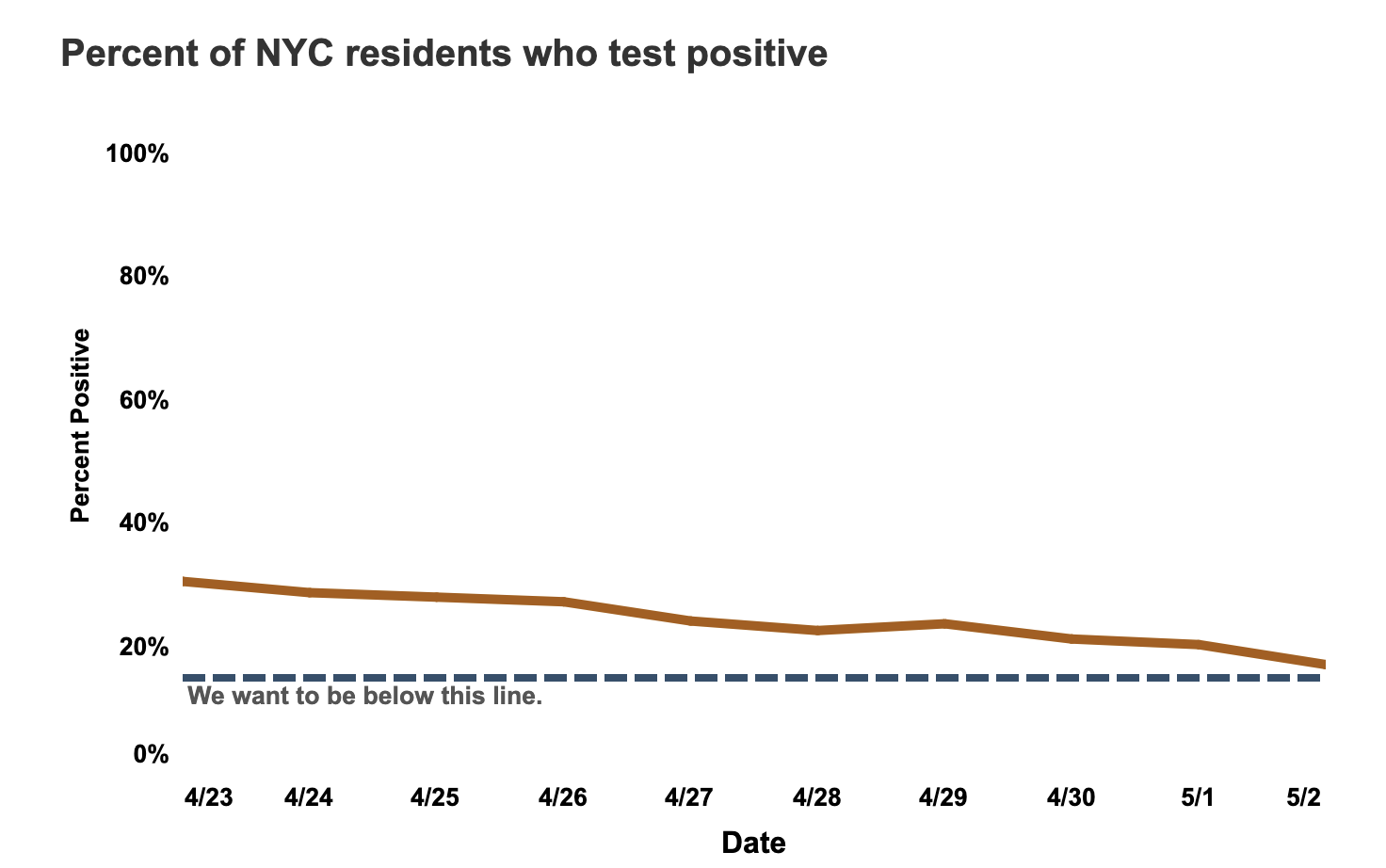
Mayor Bill de Blasio
May 4, 2020 By Allie Griffin
The city is making progress in its fight against the coronavirus with a number of key measures moving in the right direction.
The mayor announced today that the three key indicators that will be used to determine when the city can reopen showed positive results.
The number of new hospital admissions for COVID-19 patients fell, as did the number of COVID patients in ICUs and the percentage of New Yorkers who have tested positive for the virus. The mayor cited data from Saturday, the latest available.
The NYC Dept. of Health is monitoring the three data points to determine when New York City can reopen. If all three data points decline for 10 consecutive days under a specific threshold, the city will start to lift some restrictions.
Mayor Bill de Blasio called the latest results—”an excellent day.” All three indicators, he said, decreased from a day earlier.
“I am very pleased to say we have three indicators now and all three are down today, so congratulations New York City,” de Blasio said from City Hall. “This is the kind of day we have been waiting for and it is a beautiful thing and let’s put together some more like it — that’s our pathway to something better.”
The number of people admitted to New York City hospitals with COVID-19 symptoms was 88 on Saturday. This was a drop from 113 on Friday and 129 on April 25.

(NYC Department of Health)
The city aims to keep the number of hospital admissions below 200 for 10 consecutive days. While it has seen success, the number has fluctuated over those days. For instance, the number of admissions increased from 88 Thursday to 113 Friday.
The two other key indicators have yet to meet the threshold set by the Dept. of Health.
The number of people in intensive care units (ICU) at the city’s 11 public hospitals has steadily declined over the past 10 days, but is still far from reaching its goal.
On Saturday, the number decreased from 645 on Friday to 632 people. However, the daily number needs to be below 375 for 10 consecutive days before the city can consider lifting some restrictions.

(NYC Department of Health)
Finally, the city wants to see less than 15 percent of the people tested for COVID-19 report a positive result. The numbers have also been moving in the right direction — with the percentage on Friday being 20 percent, while on Saturday it was 17 percent.

(NYC Department of Health)
All three indicators must be below the specified thresholds for 10 consecutive days before the City can begin to lift some restrictions on social distancing and nonessential businesses.
Governor Andrew Cuomo must also give approval to re-open the city, as it’s ultimately the state’s decision.
Click here for more information on Covid-19 from NYCHealth.
One Comment

Be careful people. During the 75 degree sunny weather yesterday I saw LIC looking like it does on a normal beautiful spring day. Social distancing and masks out the window, and the majority of bars on Vernon Blvd (especially shame on Blend and their crowd…walked past and looked like Mardi Gras) full of people drinking and socializing as normal-just out on the sidewalk and not inside. If Covid-19 takes up to 14 days to show symptoms better not be too confident just yet.